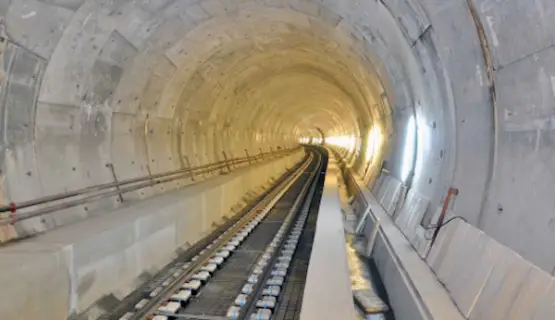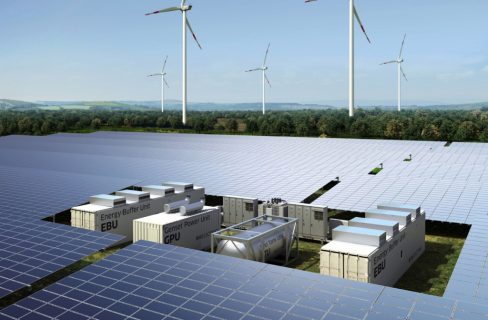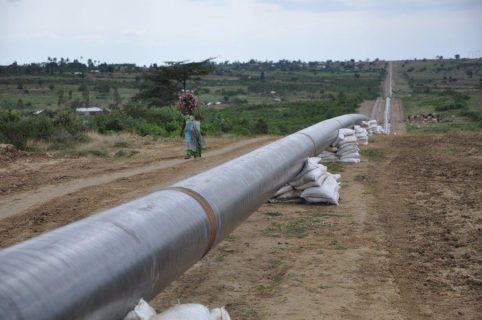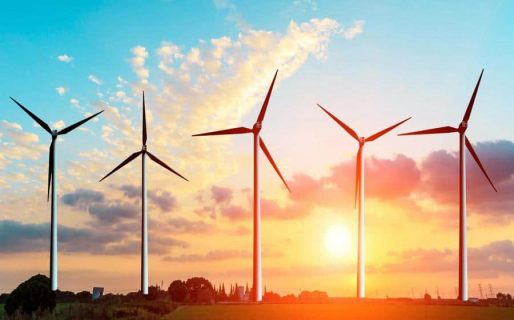Morocco is one of the largest economies in Africa and it is also one of the highly ranked country on the infrastructure dimension in the continent. This however has not made the country reluctant in terms of infrastructure development, as it is investing heavily especially in transport and energy projects. Theses are the top mega projects in Morocco.
Zenata Eco-City project

Located in the northeast of the Moroccan metropolis of Casablanca, Zenata Eco-City is a sustainable urban development project that is set to curb the impact of population growth through social inclusion and job creation.
Developed on a total of 1,830 hectares piece of land that stretches out over 5.3 km along the Atlantic coast and 3.5 km of the sea that flanks the Casablanca-Rabat expressway, the city is designed with respect to 3 fundamental pillars of sustainable development, i.e. the environmental, social and economic.
It will incorporate three service activities, organized in sections the first of which is education. The second section, the health section, will include a private healthcare unit, with a strong offering of specialized health plans while the third section– dedicated to business, aims to make Zenata an attractive commercial and family leisure destination.
The first phase of the Zenata Eco-City project, which is crisscrossed by a complete public transport network and paths reserved for pedestrians and bicycles, was made accessible to the public in March 2016, including the opening of an Ikea store.
Strait of Gibraltar (Morocco-Spain) underwater railway tunnel project

This is a proposed underwater railway tunnel project that is expected to deliver a fixed link between Morocco and Spain, or rather Africa and Europe. The tunnel will be built across the Strait of Gibraltar, a narrow strait also known as the Straits of Gibraltar, that connects the Atlantic Ocean to the Mediterranean Sea and separates the Iberian Peninsula in Europe from Morocco in Africa.
The Strait of Gibraltar (Morocco-Spain) underwater railway tunnel project consists of a 38km-long tunnel from Tarifa to Tangier. Of the 38km, the tunnel would be underwater for 27 kilometers at a maximum depth of 475m and a slope of 3 percent.
Noor Ouarzazate Solar Complex Project

The 580MW Noor Ouarzazate Solar Complex project, which is set to deliver the world’s biggest concentrated solar power facility is being carried out in phases approximately 10 kilometres north of the Moroccan city of Ouarzazate.
The construction of the first phase, a 160MW concentrated solar power (CSP) plant, dubbed Noor I, was carried out and connected to the Moroccan power grid on 5 February 2016, while the second phase featured the construction of the 200MW Noor II CSP plant and also the 150MW Noor III CSP unit. It was commissioned in January 2018.
The third phase under which Noor IV, a 72 MW photovoltaic power station will be constructed for a total investment of 750 million MAD is still under development.
Mohammed VI Tower project

With a total area of 102,800 m², Mohammed VI Tower is a 250m high-rise mixed-use building that is under construction next to the Bouregreg River in Rabat, the Moroccan Capital.
The building consists of a tower set on a podium to resemble a rocket on its launch pad, and it is designed to be visible from a distance of approximately 50 kilometres all around. Inside, the 55 storeys contain a luxury hotel, offices, high-end apartments, and even a viewing terrace on the top floor, all accessible via a total of 40 lifts, 23 of which are in the tower and 17 in the podium.
According to the architect, the building structure can withstand not only the usual elements, such as strong winds or seismic events but also flooding. It is braced 70% by its concrete core and 30% by the structure of the steel porticos on its façade. The façades are particularly stunning, covering an area of more than 70,000 m², 41,000 m² for the tower, and 32,500 m² for the podium.
To add to its strength, a tuned mass damper system will be installed in the last few storeys at the top of the tower in order to reduce oscillations.
Casablanca to Marrakech, and Marrakech to Agadir high-speed rail lines (LGV Est) project

This is a planned project for the constructis (LGV Est) in Morocco, following the success of the Tangier-Casablanca LGV Est that was commissioned back in 2018 becoming not only Morocco’s but also Africa’s first high-speed rail line.
The first of the two new high-speed rail lines (LGon of two new Ligne à Grande Vitesse Est européenne or rather high-speed rail lineV Est) in Morocco is planned to connect Marrakech to Agadir with the aim of bringing the southern provinces of the Noth African country closer together, while the second line will extend the Tangier-Casablanca LGV Est to Marrakech.
The Casablanca to Marrakech, and Marrakech to Agadir high-speed rail lines (LGV Est) project is part of the Morocco national network extension policy, known as the ”National Railway Infrastructure Development Plan”.
Xlinks Morocco-UK Solar Project

Developed and currently owned by Xlinks, Xlinks Morocco-UK Solar Project is a 7,000MW solar PV power project that is being carried out on an area of approximately 1,500km2 in Guelmim-Oued Noun.
Upon completion, the US$ 1.6bn project is expected to generate 10.5GW of zero-carbon electricity from the sun and wind and deliver 3.6GW of reliable energy for an average of 20+ hours a day. Alongside the consistent output from its solar panels and wind turbines, an onsite 20GWh/5GW battery facility will provide sufficient storage to reliably deliver each and every day.
The electricity generated from this facility will be evacuated to the UK via a 3,800 km undersea high voltage direct current (HVDC) transmission line that will be the longest subsea power transmission link in the world.
Mohammed VI Tangier Tech City Project

Initially announced in 2016 on the occasion of Morocco’s King Mohammed VI’s visit to Beijing, Mohammed VI Tangier Tech City Project is a US$ 10bn project to construct a high technology and manufacturing hub on a 200-hectare site in Ain Dalia on the outskirts of Tangier, a city in northwestern Morocco.
The project is developed jointly by the Moroccan and the Chinese governments, and it is designed as the spearhead of the future Tangier region economic hub at the gateway to Europe. It is expected to host 200 Chinese companies, operating in the food, automotive, aeronautical, renewable energy, and textile industries.
These companies will develop products for export to African and European markets and will benefit from Morocco’s free trade agreement with Europe and the US, avoiding in this way tariffs that might otherwise be imposed on Chinese products.
Tendrara Export Pipeline project

This is a 120-km natural gas pipeline set to connect the Tendrara gas fields to the Maghreb-Europe Gas Pipeline. The pipeline will run from the Tendrara gas fields, near Tendrara, Figuig province, Oriental Region, to connect with the Maghreb-Europe Gas Pipeline near Ain Bni Mathar, Jerada province, in the Oriental region.
The project will be carried out under Build-Own-Operate-Transfer terms by Sound Energy, an AIM-quoted transition energy-focused business, that was in 2020 granted by the Moroccan Ministry of Energy full rights to carry out the project.
Upon completion, the Tendrara Export gas Pipeline is projected to meet 30% of the country’s oil demands. The national production of hydrocarbons in Morocco is expected to reach 96 million cubic meters of natural gas and 4,300 tons of condensate by the end of 2020.
Dakhla Wind Farm Project

Developed by Soluna Technologies Ltd, a newly-founded company powering the blockchain economy with low-cost renewable energy, backed by a US private equity firm Brookstone Partners, Dakhla Windfarm is a 900MW onshore wind power project coming up on a 37,000-acre site in Dakhla-Oued Ed-Dahab, Morocco.
The project will be developed in a modular fashion called Pods, with each Pod comprising 12 MW of power generation, a storage system, and a 6-MW cryptocurrency mining or blockchain computing centre. The first phase will consist of three such Pods, including wind turbines, totalling up to 36 MW and it will require an investment of US$ 100m.

